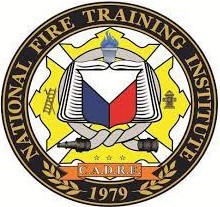ASSESSING THE POSSIBILITY OF UTILIZING THE INMATES OF LAPU-LAPU CITY JAIL AS PAID WORKERS FOR THE LIVELIHOOD PROJECTS OF THE LOCAL GOVERNMENT UNIT

Type
Thesis
Authors
RUBIO ( RENANTE B )
Category
PSOSEC
[ Browse Items ]
Publication Year
2016
Publisher
PPSC - NPC, Philippines
Abstract
Different programs for inmates are implemented in Lapu-Lapu City Jail and an
Inmate’s Welfare and Development Program (IWD) section was created to handle all
activities of inmates especially on livelihood trainings. Hence, this study focused on the
assessment of the possibility of utilizing the inmates for livelihood projects of the city in
Lapu-Lapu City Jail Male Dormitory.
The study used the descriptive method of research and it assessed the possibility
of utilizing the inmates of Lapu-Lapu City Jail as paid workers for the livelihood projects
of the Local Government Unit (LGU). Two respondents-the inmates and the personnel-
were determined to answer the survey questionnaire. The tools used in the study were:
Key informants Interview (KII), Document Analysis, and Focus Group Discussion (FGD),
Self-formulated questionnaire was the primary instrument in gathering the needed data.
The following were the findings based on the results of the Survey, KII, and the
FGD: the majority of the respondents belong to ages 24-44, considered as productive
ages. Of these productive ages, ages 30-34 got the highest number from the inmate
respondents, and ages 25-29 for the personnel respondents. However, on the part of
the Educational Attainment, Secondary Level got the highest from the inmate
respondents, while it was notable herein from the BJMP personnel respondents who
were all college graduates as the entry requirement of the Bureau.
On the part of the respondents’ awareness on the implementation of the
livelihood, technical and vocational skills program, majority of both respondents were
aware of the implementation of the livelihood, technical and vocational skills program
inside the Lapu-Lapu City Jail. There were 15 skills of the inmates respondents that
could be tapped by the LGUs or can be referred by the LGU to establishments as
services offered within the jail. This goes to show that both respondents were aware of
their acquired skills inside the jail.
Out of the 29 technical, vocational and livelihood skills enumerated on the
survey, furniture making (finishing) tops the list followed by Computer Systems
Servicing, and Jewelry Making (Fine jewelry). On the concern of Human Resources,
the study showed that the majority of the inmates-respondents expressed that there
was a lack of manpower or personnel assigned as in-charge of the livelihood, technical
and vocational skills; had no adequate knowledge; and lack the commitment to serve
them. While on the side of personnel, they had expressed that there was an adequate
manpower but did not possess adequate knowledge on livelihood, technical and
vocational skills. It also showed that majority of the inmates-respondents expressed
that there was lack of financial support from BJMP, LGU, and the Service Providers that
served the Lapu-Lapu City Jail in order to pursue the Livelihood, Technical and
Vocational Skills trainings. But the personnel said otherwise especially with the Service
Providers. At present the financial supports came from the contracts of the external
businesses that came to maximize the idle time of the inmates.
In terms of the administration of the implementation of the livelihood, technical
and vocational skills inside Lapu-Lapu City Jail, it was reflected that there was no
definite project thrusts; non-continuity in the implementation; and no TESDA accredited
livelihood, vocational and technical Skills plan as expressed by the inmate-respondents.
The fact that the researchers coordinated with the LGU of Lapu-Lapu City Manpower
and Development Unit, they only had three skills training being offered. These are
Dressmaking, Beauty Care, and Massage and are not TESDA accredited. However,
the jail personnel said otherwise except for there was no TESDA accredited livelihood,
technical and vocational skills plan.
The following are hereby recommended by the Researcher: 1) conduct a
continuous skills inventory of the incarcerated inmates to ensure relevance and proper
enhancement of the inmates available skill coupled with a Unit In-charge personnel that
could link with the LGUs and potential employment agencies locally and internationally;
2) ensure relevant skills training to be offered inside the jail that will respond to the local
and international demands; 3) encourage the LGU to offer more skills inside the jail with
TESDA accreditation; 4) encourage the BJMP leadership to set up a division on
livelihood, technical and vocational skills and assign more personnel with skills needed
to be implemented inside the jails; 5) involve the partners in crafting an integral
interventions to the skills needed by the inmates.
Inmate’s Welfare and Development Program (IWD) section was created to handle all
activities of inmates especially on livelihood trainings. Hence, this study focused on the
assessment of the possibility of utilizing the inmates for livelihood projects of the city in
Lapu-Lapu City Jail Male Dormitory.
The study used the descriptive method of research and it assessed the possibility
of utilizing the inmates of Lapu-Lapu City Jail as paid workers for the livelihood projects
of the Local Government Unit (LGU). Two respondents-the inmates and the personnel-
were determined to answer the survey questionnaire. The tools used in the study were:
Key informants Interview (KII), Document Analysis, and Focus Group Discussion (FGD),
Self-formulated questionnaire was the primary instrument in gathering the needed data.
The following were the findings based on the results of the Survey, KII, and the
FGD: the majority of the respondents belong to ages 24-44, considered as productive
ages. Of these productive ages, ages 30-34 got the highest number from the inmate
respondents, and ages 25-29 for the personnel respondents. However, on the part of
the Educational Attainment, Secondary Level got the highest from the inmate
respondents, while it was notable herein from the BJMP personnel respondents who
were all college graduates as the entry requirement of the Bureau.
On the part of the respondents’ awareness on the implementation of the
livelihood, technical and vocational skills program, majority of both respondents were
aware of the implementation of the livelihood, technical and vocational skills program
inside the Lapu-Lapu City Jail. There were 15 skills of the inmates respondents that
could be tapped by the LGUs or can be referred by the LGU to establishments as
services offered within the jail. This goes to show that both respondents were aware of
their acquired skills inside the jail.
Out of the 29 technical, vocational and livelihood skills enumerated on the
survey, furniture making (finishing) tops the list followed by Computer Systems
Servicing, and Jewelry Making (Fine jewelry). On the concern of Human Resources,
the study showed that the majority of the inmates-respondents expressed that there
was a lack of manpower or personnel assigned as in-charge of the livelihood, technical
and vocational skills; had no adequate knowledge; and lack the commitment to serve
them. While on the side of personnel, they had expressed that there was an adequate
manpower but did not possess adequate knowledge on livelihood, technical and
vocational skills. It also showed that majority of the inmates-respondents expressed
that there was lack of financial support from BJMP, LGU, and the Service Providers that
served the Lapu-Lapu City Jail in order to pursue the Livelihood, Technical and
Vocational Skills trainings. But the personnel said otherwise especially with the Service
Providers. At present the financial supports came from the contracts of the external
businesses that came to maximize the idle time of the inmates.
In terms of the administration of the implementation of the livelihood, technical
and vocational skills inside Lapu-Lapu City Jail, it was reflected that there was no
definite project thrusts; non-continuity in the implementation; and no TESDA accredited
livelihood, vocational and technical Skills plan as expressed by the inmate-respondents.
The fact that the researchers coordinated with the LGU of Lapu-Lapu City Manpower
and Development Unit, they only had three skills training being offered. These are
Dressmaking, Beauty Care, and Massage and are not TESDA accredited. However,
the jail personnel said otherwise except for there was no TESDA accredited livelihood,
technical and vocational skills plan.
The following are hereby recommended by the Researcher: 1) conduct a
continuous skills inventory of the incarcerated inmates to ensure relevance and proper
enhancement of the inmates available skill coupled with a Unit In-charge personnel that
could link with the LGUs and potential employment agencies locally and internationally;
2) ensure relevant skills training to be offered inside the jail that will respond to the local
and international demands; 3) encourage the LGU to offer more skills inside the jail with
TESDA accreditation; 4) encourage the BJMP leadership to set up a division on
livelihood, technical and vocational skills and assign more personnel with skills needed
to be implemented inside the jails; 5) involve the partners in crafting an integral
interventions to the skills needed by the inmates.
Number of Copies
1
| Library | Accession No | Call No | Copy No | Edition | Location | Availability |
|---|---|---|---|---|---|---|
| NPC Library | 676105 | 1 | Yes |

